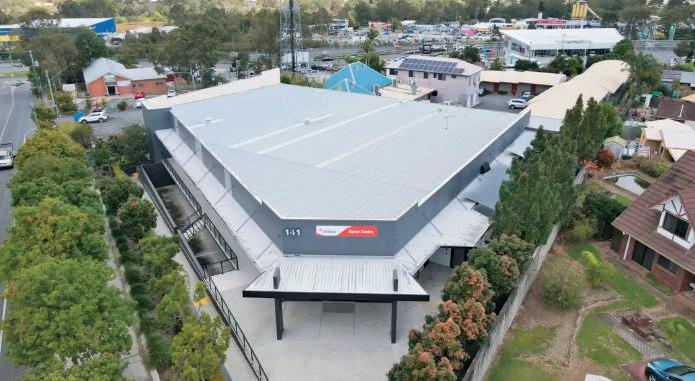

QUEENSLAND GOVERNMENT'S LAND TAX ON ICE WITH JAMIE DAVEY





Earlier this year the Queensland Government announced a proposal to alter the land tax arrangements for interstate property investors that would take effect on June 30th 2023. The land tax reform would have calculated an owner’s liability for land tax based on the total value of their property holdings throughout the whole of Australia, that are not exempt, not just the property holdings in Queensland.
The Queensland Government stated that one of the main reasons the proposed Land Tax reform was to be introduced was to help stem Queensland’s housing affordability crisis, which is seeing inflated house prices lock working families out of the market and pushing up rents. It was also being brought on as a way to offset the decades of tax breaks previously given to large property investors with holdings in multiple states. However, a great number of the reform’s critics agreed that this extra tax would be passed onto renters, which would worsen the current situation.
This proposed amendment to land tax legislation was met with much disparagement and conjecture from many community stake holders The Real Estate Institute of Queensland were possibly the most fervent of these objectors labelling the new tax as a ‘slap in the face’ and saying it could have damaged property investor confidence in the Queensland market at a time of the tightest vacancy rates in history. The proposal was also met with fierce criticism from other state premiers and ministers who labelled it a “lazy policy to simply increase tax” and that they would not comply or hand over any information about Queensland property holders living in their respective states or territories.
Although the Land Tax Reform is being put on ice at the moment, it has shone a light on the fact that a reform is due. The Land Tax thresholds have not been reviewed in Queensland since 2008, and it is being suggested that the government should consider adjusting the thresholds annually


Consumers are feeling the pressure of high inflation and rising interest rates with income returns not reflecting the recent increase in the costs of goods and services. What implications is this having on the different commercial property sectors?

Industrial assets are yet to feel the effects of high inflation and the recent rises in interest rates. This can be attributed to the rapidly rising rental rates being driven by the high demand for industrial space. Furthermore, increases in the cost of raw materials is making it difficult for developers to commit to new product which means the current supply shortage for industrial property will remain for the foreseeable future.
Office
The expectation and ability to work from home is seeing tenants reducing their office footprint to accommodate increased business expenses arising from high levels of inflation. As such, vacancy levels remain high across the sector and incentives are an important factor to leasing available tenancies.
Despite a tough two years with border closures and lockdowns, the service industry has raised prices. This has been driven by increased domestic and international travel. Rising wages have been the primary contributor to a rise in accomodation costs by 16% in the last 12 months. Additionally, costs for cafes, fast food and restaurants have increased by 6% due to growing food prices, supply chain issues, and labour shortages.
High vacancy levels continue to be a cause for concern for retail assets, resulting in minimal rental growth. Landlords are repurposing assets to accommodate a more diverse range of uses and hedge against inflation. The growing childcare and medical sectors are some common alternative uses that retail property owners are targeting.


Previously used as a call centre
Approximately 528sqm* of lettable floor area


Open plan layout with ducted air conditioning throughout
optic internet connection and brand new security system

out incentives on offer for long lease terms



system and


Premium 1,613sqm*
1,141sqm* ground floor warehouse and showroom


472sqm of A grade mezzanine office
2,677sqm*
Container height roller
onsite carparks








Total lettable area of 1,738sqm* over 3 levels
Impressive entry foyer offering access to ground floor units and elevator 64 7% Occupancy currently with only 627sqm* available for lease

Net rental return of over $600,000 when fully leased

Great mix of 5 professional tenants across the first 2 levels
Well presented, corporate fit outs throughout all occupied tenancies Secure undercover parking options with ample on grade car parking to rear of property

Great natural lighting throughout the whole building
Multiple balcony / private staff areas
Ducted air conditioning throughout Excellent signage exposure to thousands of cars daily 5 star nabers rating










This property was on the market for only 2 weeks and received interest from a variety of tenants ranging from local businesses to interstate companies wanting to relocate. In the end after receiving multiple offers the owner went with a local farm company who will be using the space for storage of vehicles and equipment.




















It’s been a busy few years for the luxury retail industry. Increased personal savings due to lockdowns have seen an increase in retail sales of luxury goods. This isn’t just an Australian phenomenon, with the S&P Global Luxury returns (The S&P Global Luxury Index is comprised of 80 of the largest publicly traded companies engaged in the production or distribution of luxury goods or the provision of luxury services.) showing a 10 year high, which peaked in November 2021 This represented a 40 per cent increase in returns compared to the 12 months prior, with annual increases over the past five years averaging 8.33 per cent. Post this period, changes in interest rates internationally during early 2022 saw some volatility in results, with most recent indicators showing some decline in activity.
For Australia, high inflationary pressures together with rising interest rates have seen retail trade levels moderate for essential goods Despite this, the strong labour market with record low unemployment has kept confidence up. As a result, we continue to see savings well ahead of pre pandemic levels, which has supported an increase in credit card transaction activity during the first half of 2022. While we’ve seen some volatility in activity, the overall increased wealth creation - due to strong gains in housing over the past few years - has improved sentiment surrounding luxury spending.
During a time where CBD retail has been under pressure, we’ve seen a strong commitment by luxury retailers to grow their brick and mortar footprint. While tenants were hampered by the lockdowns restricting non essential shopping, and border closures cutting international tourism, some retailers took this time to improve their customer experience and in-store offerings However, for some, plans were in place well before COVID 19 as activity in the luxury retail space slowly grew momentum, increasing returns year on year.
The redevelopment of 25 Martin Place (formerly MLC Centre) is one of the longer term projects which, upon completion, will include a hub for luxury fashion. Brands new to Australia, including Missoni and Brunello Cucinelli, will join Valentino and Dolce & Gabbana at this premier address Despite the disruption along Castlereagh Street due to the Sydney Metro development, existing retailers including Bvlgari and Chanel welcome new retailers like Robert Dubuis, while Dior, Fendi and Hermes have all seen recent upgrades to their premises. Cartier’s new Oceania flagship store is expected to open up later this year at its George Street location, extending the luxury trail up King Street and down Castlereagh Street to Westfield with Gucci, Prada, Versace, Piaget boutique and many more.
Sydney isn’t the only market to benefit from upgrades to luxury strip retail, with Ralph Lauren announcing their first Western Australian offering and a new Melbourne CBD store due to open later this year. This adds to the luxury brands also calling major Australian cities home including Louis Vuitton, Hugo Boss, Tiffany and Burberry to name a few.
During a time where retail vacancies have been pressured upward for Australian CBDs, the growing demand from these larger space users has been instrumental in improving vibrancy to our cities These retailers attract customers from across the country, as well as internationally, seven days a week They’re not reliant on the working population which has been slow to return post pandemic. High capital expenditure in their stores keeps the quality of assets high and dictates new benchmarks in achievable rents, improving the attractiveness of our cities both domestically and internationally for visitors.









Curt Low is joining our commercial broking team! Curt has an extensive background as a property broker and is well equipped to take on new clients and challenging scenarios. He is joining a team with more than 20 years experience in the finance industry. With a focus on service and the customer experience, Curt's primary goal is to achieve a positive lending experience and a great result for the customer. Prior to working as a mortgage broker Curt was involved in the operation and management of several small businesses ranging from import/export warehousing, technology start ups and the hospitality industry. This has provided him with a breadth of experience across multiple different industries enabling him to best service his clients needs.





